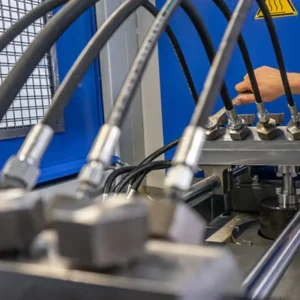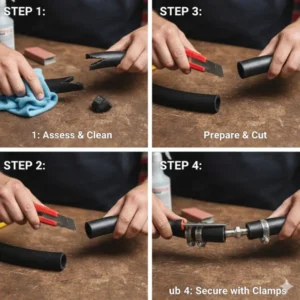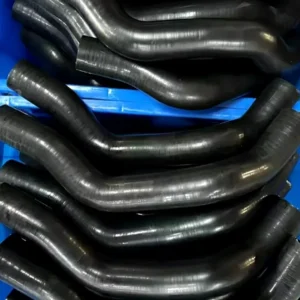Kinked rubber hoses are a frustrating and common issue, leading to drastically reduced water flow, damaged equipment, and unnecessary wear and tear on the hose material itself. Interruptions caused by kinking waste time and can even cause permanent structural failure in the rubber.
Fortunately, there are several simple yet effective methods you can employ to minimize or eliminate kinking. By understanding the causes of twisting and using proper handling techniques, you can extend the life of your hoses and maintain efficient fluid transfer.
Why Keep Rubber Hoses from Kinking?
Preventing rubber hoses from kinking is essential for maintaining efficient operation and ensuring the longevity of the equipment. Kinks interrupt fluid dynamics, placing undue stress on both the hose material and any connected pumps or nozzles. Avoiding this issue is a matter of both practicality and cost-effectiveness.
Primary Reasons to Keep Rubber Hoses from Kinking:
- Maintain Consistent Fluid Flow and Pressure: A kink creates a severe restriction in the hose’s path, drastically reducing the volume and pressure of the fluid moving through it. Keeping the hose straight ensures an optimal, uninterrupted flow rate, which is critical for the efficiency of connected tools like sprayers or hydraulic equipment.
- Prevent Damage and Extend Hose Lifespan: Repeated kinking severely stresses the rubber and any internal reinforcement layers (like textile braiding), leading to premature fatigue. This localized stress can cause the hose walls to weaken, eventually resulting in splits, leaks, or outright ruptures that necessitate immediate and costly replacement.
- Reduce Stress on Pumps and Motors: When a hose kinks, the resulting pressure blockage forces the connected pump or motor to work harder against the high back-pressure. This increased load can cause the equipment to overheat or fail prematurely, leading to expensive repairs not just for the hose, but for the pump as well.
- Ensure Safety and Prevent Accidents: A sudden, unexpected kink and subsequent blockage can cause a quick and dangerous surge in pressure when the blockage is released. In industrial or high-pressure applications, maintaining a smooth, unkinked hose path is a fundamental safety practice to prevent component failure or injury from pressure bursts.
How to Keep Rubber Hose From Kinking?
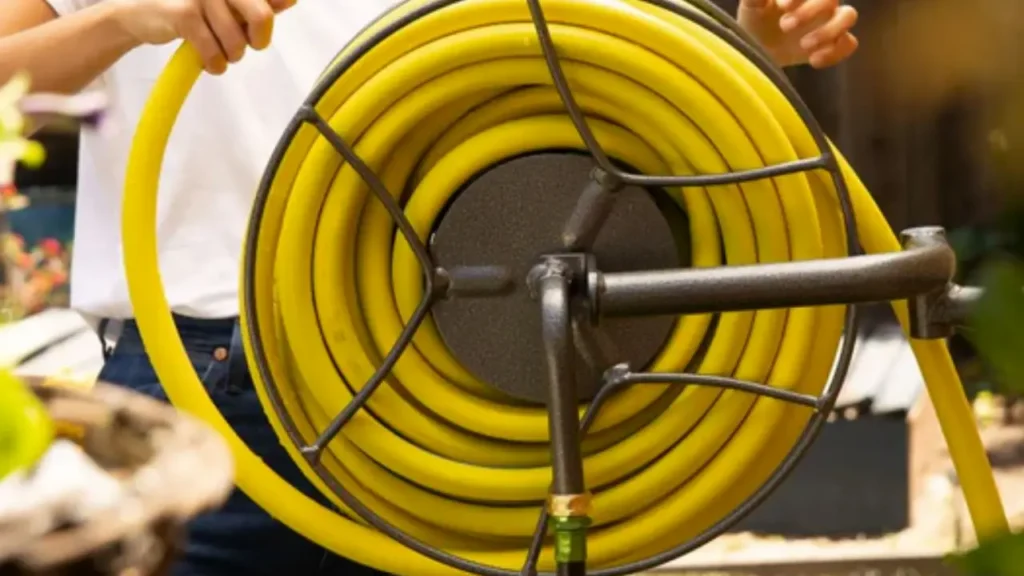
Preventing a rubber hose from kinking involves careful handling and smart storage techniques. By reducing twists and minimizing sharp bends, you ensure uninterrupted flow and extend the life of your hose, saving you both time and the cost of frequent replacements.
Step 1: Use Proper Coiling and Uncoiling
When storing or deploying the hose, always use the “over-under” technique for coiling, which follows the natural twist of the hose material. This method prevents the hose from building up internal memory, which is the primary cause of sudden, frustrating twists and kinks during use.
Uncoil the hose completely before applying pressure, laying it out in a smooth curve. Never pull a tightly coiled or bunched hose, as this forces sharp bends that immediately create weak points and choke the flow, often leading to permanent damage to the reinforcement layers.
Step 2: Choose the Right Hose Length and Diameter
Select a hose length that comfortably reaches your work area without needing to be stretched taut. A hose that is too short will be constantly under tension, forcing severe kinks when attempting to navigate corners or obstacles.
A hose with a larger diameter generally offers better resistance to kinking because it is less prone to collapse. For high-pressure or heavy-duty use, always choose a hose with multi-ply reinforcement, as the internal braiding provides stiffness against crimping.
Step 3: Utilize Anti-Kink Attachments
Install a brass or spring-style anti-kink protector at the faucet or spigot connection point. This small device prevents the common, sharp 90-degree bend that occurs right where the hose meets the source, which is a frequent initial point of kinking.
Ensure any connecting accessories (like nozzles or quick-connect fittings) swivel freely. If a fitting sticks, the resulting torque is transferred to the hose itself, causing it to twist and ultimately leading to a kink further down the line when under pressure.
Step 4: Avoid Sharp Bends and Obstacles
When pulling the hose across the work area, guide it around corners in wide, gradual arcs rather than sharp turns against walls or furniture. Repeated friction and sharp angles weaken the rubber at those stress points, making kinking inevitable.
Never drag the hose under or around heavy objects, which can crush or pinch the material. If you must cross an area with vehicle traffic, use a hose bridge or temporary ramp to maintain the hose’s circular shape and protect it from flat spots.
Step 5: Drain and Store the Hose Properly
After each use, fully depressurize and drain all water or fluid from the hose. A hose left with fluid inside is heavier and stiffer, increasing the chances of forming permanent kinks during handling or freezing in cold temperatures.
Store the hose on a reel or in large, loose loops away from direct sunlight and extreme temperatures. Storing it coiled correctly prevents the material from adopting a tight, permanent spiral memory, ensuring it deploys straight and kink-free next time.
How to Bend Rubber Hose Without Kinking?
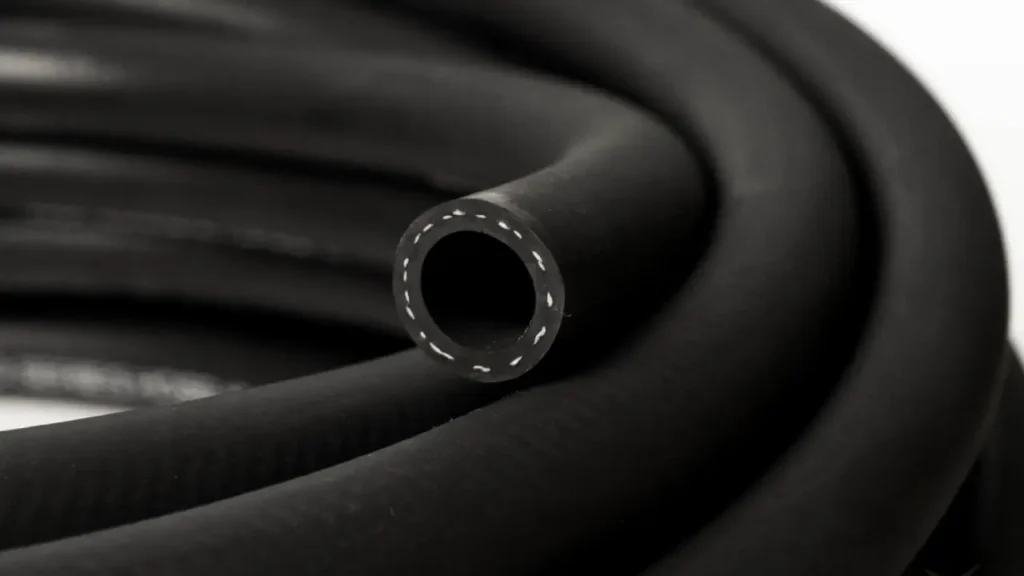
Bending a rubber hose without kinking requires careful management of the hose’s bending radius and internal tension. By utilizing support tools and controlled techniques, you can route the hose safely around corners while maintaining consistent fluid flow and preserving the hose’s structural integrity.
Step 1: Determine the Minimum Bend Radius
Identify the manufacturer’s specified minimum bend radius for your specific rubber hose. Forcing the hose to bend tighter than this radius guarantees kinking and permanent internal damage, regardless of any other technique you use.
Always aim to bend the hose to a radius larger than the specified minimum. Using a wide, gradual curve distributes the stress evenly across the hose wall, preventing the inner curve from collapsing and the outer curve from stretching too thinly.
Step 2: Utilize a Bending Spring or Guide
For precise, tight bends, slide an external bending spring or a flexible wire conduit bender over the hose. This guide acts as a mold, forcing the hose to maintain a smooth, circular cross-section throughout the curve, even when the bend is near the minimum radius limit.
Alternatively, use pre-formed elbow fittings or bend restrictors at fixed connection points where a sharp change in direction is required. Never force the hose material itself to accommodate a tight corner; use a proper fitting to manage the angle transition.
Step 3: Heat the Hose for Temporary Flexibility
If a hose is stiff, particularly in cold environments, submerge the section you need to bend in warm (not boiling) water for a few minutes. Warming the rubber increases its elasticity, making it more pliable and much less likely to form a sharp, damaging kink.
Once the rubber is warm and flexible, route the hose quickly and secure it in its final curved position. The hose will cool and retain the new shape, but with the material stress distributed gently throughout the bend rather than localized in a severe kink.
Step 4: Add Internal Support or Filler
For non-pressurized applications where structural support is critical during the bending process, you can temporarily fill the hose. Carefully thread a flexible, sturdy material like a stiff wire or a tightly coiled spring through the inside of the hose before bending.
This internal support physically prevents the hose walls from collapsing inward at the tightest point of the bend. Remove the filler once the hose is routed and secured, ensuring the internal diameter remains smooth for unimpeded flow during operation.
Step 5: Secure the Hose After Bending
Once the desired curve is achieved and you have checked that there is no visible flattening or creasing, secure the hose immediately using clamps, cable ties, or mounting brackets. Secure it both before and after the bend.
Properly securing the hose prevents it from being pulled straight by external forces, which could undo the careful bend and cause a severe kink. A well-secured hose maintains its optimal bend radius during its entire service life.
What Makes a Garden Hose Kink-Resistant?
A rubber hose’s resistance to kinking is determined by its material composition and structural design. Quality kink-resistant hoses are engineered to recover quickly from being compressed or folded, ensuring an open pathway for water flow. This prevents the frustrating blockages common with cheaper, less durable models.
Key Factors That Determine Kink Resistance:
- Hose Material Quality and Resilience: Kink-resistant hoses utilize materials like reinforced rubber, polyurethane, or high-grade PVC that possess high resilience. This means the material has a superior ability to quickly return to its original circular shape after being temporarily folded or pinched, preventing a permanent crease from forming.
- Wall Thickness and Reinforcement: A thicker hose wall provides more structural rigidity, making it physically harder for the hose to collapse into a kink when bent. Furthermore, internal reinforcement, typically a multi-ply polyester cord braiding, acts like a skeleton, supporting the hose walls against inward compression.
- Inner Diameter (ID) to Outer Diameter (OD) Ratio: Hoses engineered with a larger OD relative to the ID offer a better wall factor, which inherently resists flattening when subjected to bending forces. This structural proportion prevents the cross-section from easily deforming from a circle to an oval shape, which is the immediate precursor to a kink.
- Low Kink-Memory (Compression Set): The material property known as “compression set” or kink-memory must be low. Hoses with low memory won’t retain the folded shape after being coiled or kinked. If a kink occurs, the material’s internal forces quickly push the hose back open, avoiding prolonged flow disruption.
- Appropriate Flexibility and Stiffness Balance: A kink-resistant hose achieves a balance: it must be flexible enough for easy use and coiling, but stiff enough to maintain its tubular structure when pulled around corners or when under pressure. This optimized flexibility and stiffness ensures the hose won’t collapse readily during normal operation.
Kinked Rubber Hose Damages
A kink in a rubber hose is far more than a minor annoyance; it represents a significant structural failure point that triggers a cascade of detrimental effects on the hose and the entire fluid transfer system. Understanding these damages highlights why kink prevention is a critical maintenance task.
Specific Damages Caused by Kinked Rubber Hoses:
- Permanent Structural Damage to Reinforcement: The sharp bend of a kink permanently deforms and often fractures the internal reinforcement braiding (steel wire or textile fibers). This structural damage is irreversible and leaves the hose unable to handle its rated pressure, severely compromising its integrity and leading to future failure.
- Premature Hose Rupture and Bursting: The pressure that builds up immediately before a kink forces the fluid through a severely restricted channel. This high back-pressure creates a massive amount of stress on the already weakened material at the point of the kink, often leading to a sudden, explosive rupture of the hose wall.
- Reduced System Efficiency and Performance: Kinks create a severe hydraulic blockage, causing a significant and immediate drop in fluid flow rate and system pressure beyond the kink. This reduced performance means tools operate inefficiently, and critical processes like cooling or chemical transfer slow down or fail completely.
- Accelerated Wear and Failure of Connected Pumps: A severe kink acts like a closed valve, forcing the pump to work against high resistance (deadheading). This unexpected load increases the pump’s operating temperature and stress, leading to accelerated wear on internal seals, bearings, and motors, and potentially causing catastrophic failure.
- Internal Tube Degradation and Material Separation: The inner tube of the hose can be pinched or cut by the rigid outer layers or fittings during a kink, especially in high-pressure applications. This internal damage causes the layers to delaminate or blister, leading to internal blockages, contamination of the fluid, and eventual hose failure.
Conclusion
By implementing techniques such as proper storage coiling, utilizing anti-kink spring protectors, and being mindful of how you drag the hose, you can significantly reduce the nuisance and damage caused by kinking. These small adjustments in care and handling will ensure your rubber hoses deliver consistent performance and last for many years to come.
Remember that the base quality and reinforcement of a hose are the first line of defense against kinking. Hoses constructed with durable, multi-ply internal braiding are inherently more resistant to collapses and twists than cheaper, single-layer options, offering superior reliability and flow, even under stress.
For durable, heavy-duty hoses designed to resist kinking and built for demanding environments, look no further than Gushan Rubber. We specialize in wholesale rubber hoses featuring advanced construction for maximum flexibility and longevity. Contact us to get the best wholesale rubber hoses from Gushan Rubber for your business!

